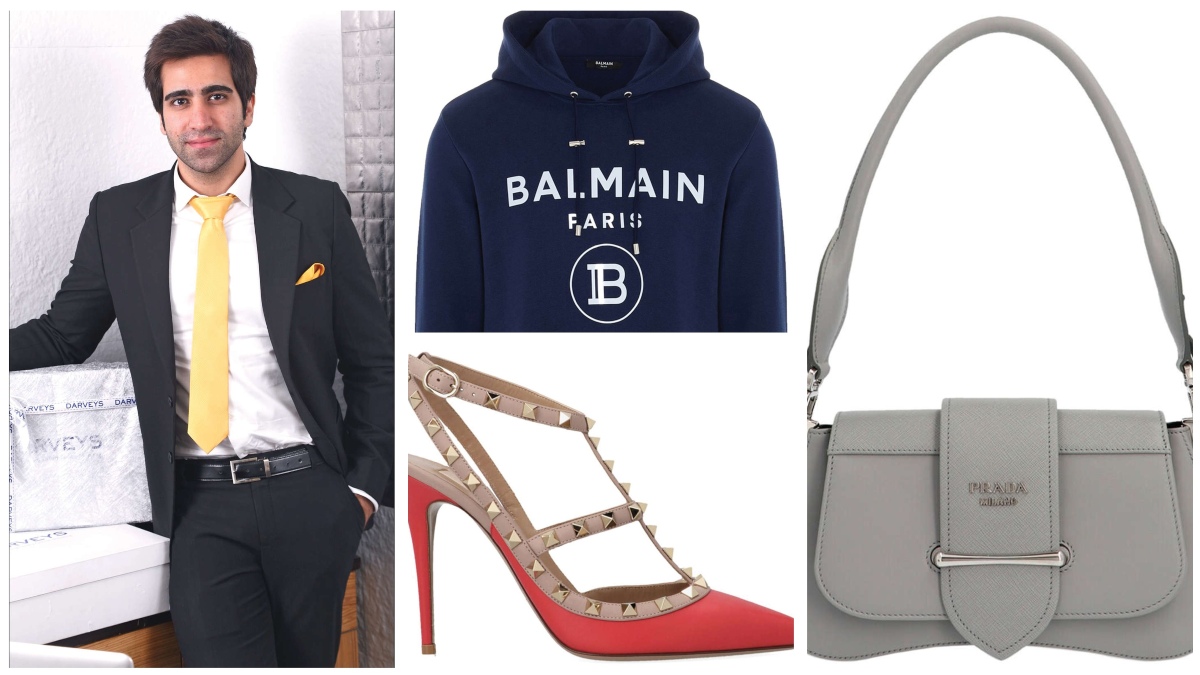


The economy may have been in shambles the last few months, but one sector has witnessed steady growth throughout — that of e-commerce. With everything from groceries to medicines, clothes to furniture now available online, the discerning buyer is spoilt for choice when browsing through shopping catalogues online. Those seeking the ultimate in luxury designer labels, need only turn to Darveys — India’s largest and fastest-growing online platform, dedicated exclusively to this purpose.


 Nakul Bajaj
Nakul Bajaj

Boasting the collections of over 120 authentic luxury fashion labels including Balenciaga, Balmain, Burberry, Gucci, Fendi, Valentino and the like, Darveys collaborates with over 500 authorised boutiques across the USA and Europe and easily allows the customer to purchase the items from those boutiques, inclusive of duty and taxes, thrrough the click of a button. For those who are not sure of the end result, Darveys offers an authenticity guarantee of 2x the price in return.
Though functioning in the sphere of fashion, in actuality Darveys is a true feat of technology. Its smart software locates the lowest bargain price for any item on its catalogues, by scouring their partner stores across the globe. The software first identifies which of their partnered stores stock the item in question, then shortlists the store selling that particular item at the lowest price. This price accounts for the rate of foreign exchange/VAT of the country it is being imported from, import duties and any discounts being offered by that particular boutique.
Founded by Nakul Bajaj in 2013, Darveys was born of a vision to create India’s largest luxury e-commerce company by connecting multi-brand retailers across the globe to consumers in India. Originally from Delhi, Bajaj was pursuing a double major in Mathematics and Economics from Emory University, when he chanced upon this idea. “My mother purchased a bag from Prada in India for Rs 2 lakh, which was sold for half that cost in Atlanta, where I was studying. I realised this was so unfair and immediately saw an immense, untapped opportunity in the luxury retail segment of our country,” he explains.
Since childhood, Bajaj has travelled the world and enjoyed the perks that his exposure to different cultures has offered him, such as insights into fashion trends found in different countries. He unabashedly claims, “I realise not everyone in India has the opportunities I have been fortunate enough to enjoy, so I strive to create such opportunities for others to explore the latest fashions and trends.”
However, the ride has not been an easy one for him so far. Whether it was being slapped with lawsuits by major Indian brand franchises — which he won, or struggling with the burden of demonetisation and the implementation of GST; he has overcome each problem with élan. He candidly shares his mantra for success, “life is like an ECG machine. When it hits the lowest point, always remember the next point will be the highest. The day it’s a smooth straight line, we are lost.”
The pandemic too brought with it numerous uncertainties, instability and risk, with the future of the luxury industry in India, being quite shaky. Indian players are turning to innovation and technology to build the future of luxury and e-commerce. From artificial intelligence to personalisation, this sector is set to change drastically. The biggest challenge perhaps is to provide customers with the experience of a physical store while they shop.
Customers are undoubtedly the most important part of any business. Their changing demands must be catered to constantly, through the adoption of a flexible marketing strategy. Personalisation and execution play a key role in this regard. When customers buy products online, they expect to receive genuine products along with seamless services. The strategy adopted to achieve this purpose is of utmost importance.
Another major challenge in the Indian context is accessibility since e-commerce has not yet filtered down to a large section of the Indian population. However, with the growth of telecommunications, it will soon be possible to tap into a larger customer base in the smaller towns of India. This new audience will appreciate the ability to access products imported from abroad. When customers residing in smaller cities experience the ease of luxury shopping online and learn to appreciate authentic designer goods sold at the best possible price; web portals like Darveys will be ideally placed to serve them.